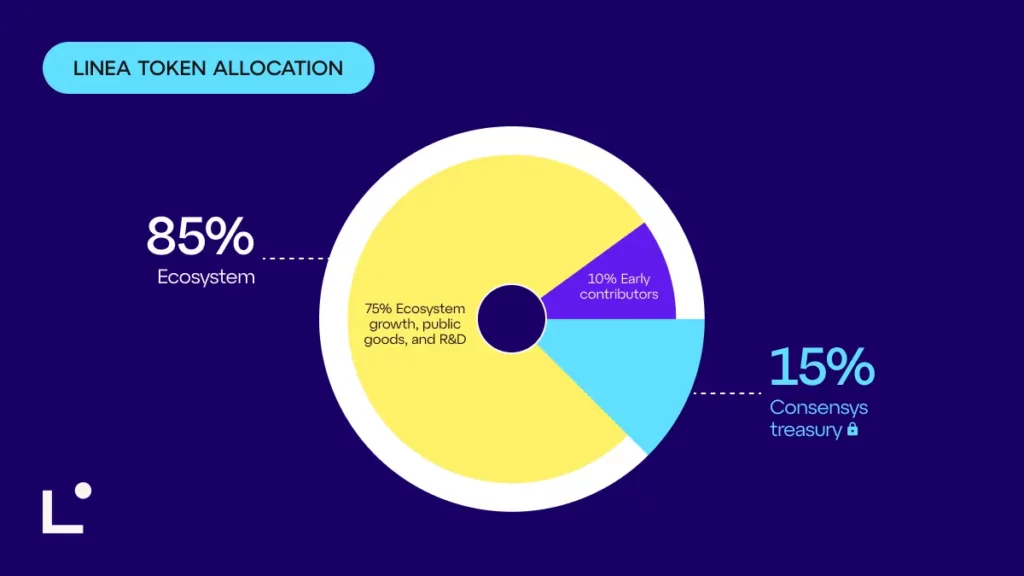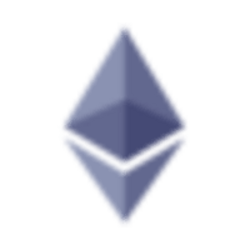Linea’s new tokenomics framework uses ETH exclusively for gas fees while positioning the LINEA token as an incentive tool without governance powers, reinforcing Ethereum alignment and long-term ecosystem growth.
-
ETH serves as the sole gas token; LINEA is not used for gas or governance.
-
85% of LINEA’s 72 billion tokens are allocated to ecosystem incentives, with 15% reserved for ConsenSys treasury.
-
Network fees burn both ETH and LINEA tokens to link usage with sustainable value creation.
Linea launches innovative tokenomics with ETH as gas and LINEA as an incentive token, driving ecosystem growth and Ethereum alignment. Discover more on COINOTAG.
-
Linea, the Ethereum layer 2 network by ConsenSys, has introduced its tokenomics emphasizing ETH as the exclusive gas token and LINEA as an economic coordination tool.
-
The model features a dual-burn fee mechanism that strengthens ETH’s monetary premium while linking LINEA’s value to real network usage.
-
According to COINOTAG sources, the Linea Consortium governs strategic decisions, ensuring Ethereum-native project stewardship without a DAO structure.
Explore Linea’s tokenomics update highlighting ETH gas usage and LINEA incentives, designed for sustainable Ethereum ecosystem growth. Read more on COINOTAG.
How Does Linea’s Tokenomics Use ETH and LINEA Differently?
Linea’s tokenomics framework uniquely separates utility and value capture by using ETH exclusively for gas fees while employing LINEA solely as an incentive token. The network implements a dual-burn mechanism where 20% of Layer 2 ETH revenue is burned, and 80% is used to buy and burn LINEA tokens. This approach reinforces ETH’s monetary premium and ties LINEA’s value directly to network usage, distinguishing it from typical Layer 2 models.
Why Is LINEA Not a Governance Token?
LINEA does not serve as a governance token, and the protocol governance is managed by the Linea Consortium, a council of Ethereum-native projects such as ENS Labs, Eigen Labs, and SharpLink. This U.S.-based nonprofit entity oversees strategic decisions, emphasizing experienced stewardship over decentralized autonomous organization (DAO) governance.
What Is the Distribution and Allocation of LINEA Tokens?
The total fixed supply of LINEA tokens is 72 billion, with 85% allocated to ecosystem incentives and 15% reserved for the ConsenSys treasury. At launch, 22% of tokens will circulate, primarily through early user airdrops and liquidity programs. Importantly, no tokens have been sold to investors or employees, ensuring fair initial distribution.
How Will the Ecosystem Fund Support Growth?
The Ecosystem Fund, representing 75% of the total supply, will be deployed over a 10-year period. In the first 12 to 18 months, approximately 25% will support community development, builder incentives, exchange readiness, and liquidity provisioning. The remaining 50% will fund ecosystem infrastructure, public goods, and protocol research, fostering sustainable long-term growth.
How Does Linea Align with Ethereum’s Vision?
Linea positions the LINEA token as an “economic coordination tool” rather than a governance asset. Allocation depends on participation and authentic ecosystem engagement, mirroring Ethereum’s 2015 launch principles. This alignment supports decentralized growth and long-term public goods funding, reinforcing Ethereum’s foundational values.
What Is Linea’s Current Ecosystem Status?
Linea currently holds $155 million in total value locked and supports over 350 applications. Recent upgrades include native USD Coin (USDC) integration and a fee subsidy partnership with Layerswap, reducing bridging costs and enhancing user experience.
 Linea token allocation. Credit: Linea
Linea token allocation. Credit: LineaConclusion
Linea’s innovative tokenomics framework distinctly separates ETH’s role as the gas token from LINEA’s function as an incentive mechanism, fostering Ethereum-aligned growth. This model, governed by a consortium of Ethereum-native projects, emphasizes sustainable ecosystem development and long-term value creation, positioning Linea as a key player in Layer 2 solutions.
Frequently Asked Questions
What is the purpose of the LINEA token in the ecosystem?
LINEA serves as an economic coordination tool to incentivize builders and users, funding ecosystem growth without governance rights, aligning with Ethereum’s principles.
How does Linea’s fee burning mechanism work?
Linea burns 20% of Layer 2 ETH fees directly and uses 80% to buy and burn LINEA tokens, linking network usage to token value sustainably.
Key Takeaways
- ETH is exclusively used for gas fees: reinforcing Ethereum’s monetary premium through fee burning.
- LINEA token functions as an incentive tool: allocated to ecosystem growth without governance rights.
- Governance managed by Linea Consortium: a council of Ethereum-native projects ensures strategic oversight.
Conclusion
Linea’s tokenomics framework innovatively aligns with Ethereum’s vision by separating gas utility and incentive functions. This structure fosters sustainable ecosystem growth, backed by experienced governance and a clear focus on long-term value creation.
